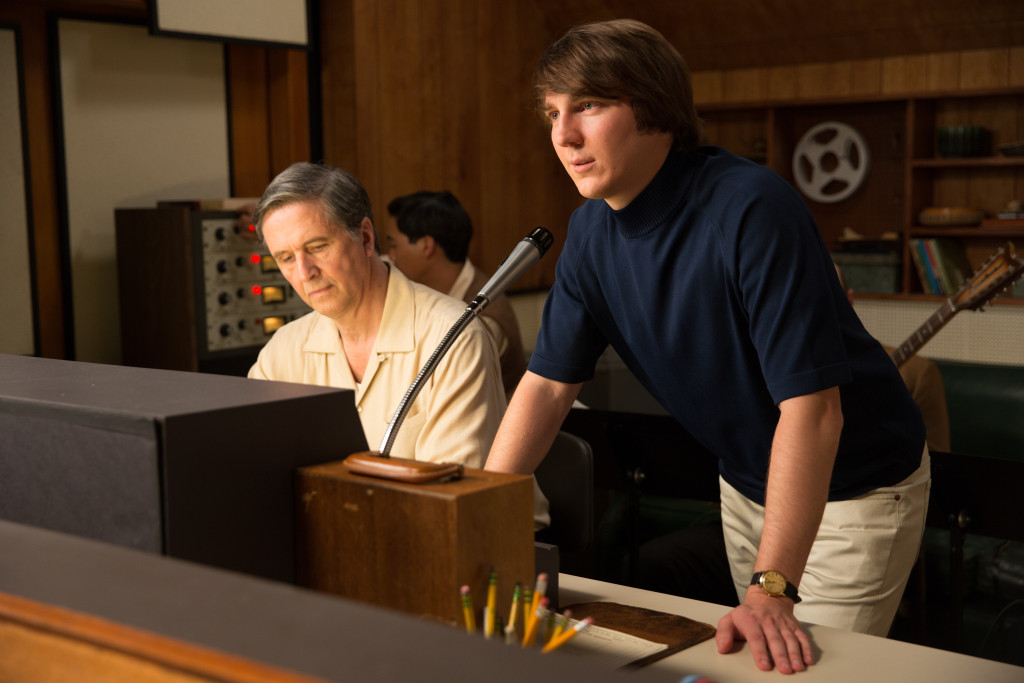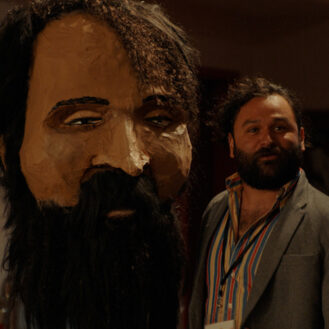By: Trevor Jeffery
Over the past few decades, the biopic has been more or less perfected and recreated over and over, to the point of boring predictability. While ultimately Love & Mercy is no exception, the film deviates from the structure enough to make the journey feel like a new, albeit shaky, perspective on the formula.
Following Beach Boy Brian Wilson, the film jumps between the 20-something-prodigy Wilson in the 1960s (played by Paul Dano) and a middle-aged, heavily medicated, bipolar Wilson in the mid-1980s (played by John Cusack).
In the 1960s, Wilson is overwhelmed by the fame of being a Beach Boy, and entrances himself in the production of his latest album, Pet Sounds, after electing not to go on tour in Japan with the rest of the band. During this period, Wilson causes rifts within the band (particularly his cousin Mike Love) over creative issues, and he begins to notice the manifestation of what would later be diagnosed as bipolar disorder.
In the 1980s, a barely-lucid Brian Wilson meets Melinda Ledbetter (Elizabeth Banks) while shopping for a car. They try to date, but Wilson’s physician and legal caretaker Eugene Landry (Paul Giamatti) prevents her from seeing him. After she witnesses his verbal and medical abuse of Wilson, she discovers Landry is using Wilson’s illness and fame for personal gain, and tries to put a stop to it.
Love & Mercy is, at the very essence, a biopic – there aren’t going to be any huge surprises. However, the non-linear time period shifting offers some freshness to the done-to-death formula: it makes it much less about the arc of Brian Wilson’s life, and offers vignettes around two important eras of his life. However, the time skip gimmick offers as many problems as it does opportunities. The 1960s arc is never resolved in any significant way – it bleeds into a psychotic episode Cusack Wilson is having, and we never return to Dano Wilson. While both Dano and Cusack contribute well to the Brian Wilson image, the time jump creates a disconnect between the two that makes it hard to initially grasp that they are the same person – there is no bridge between pre- and post-bipolar Wilson. Combined with Dano’s optimistic prodigy versus Cusack’s catatonic depiction of Wilson, it’s hard to come to terms with the fact that these Brian Wilsons are the same Brian Wilson.
Notable is Paul Giamatti’s excellent portrayal of Eugene Landry, which can be best described as a realistic cartoon villain. Giamatti oozes manipulative sleaze that makes you love to hate him.
If you’re a Brian Wilson fan, or a Beach Boys fan, or even a music fan, then Love & Mercy is worth it alone for the music – particularly the beautiful recreations of the in-studio Pet Sounds recording sessions (and the fascinating methods and lengths Wilson went to get the exact sound he wanted).
Do You Tweet? Follow:
Trevor Jeffery: @TrevorSJeffery




Be the first to comment